World Cup chances up in the air but Smith makes Major call on T20 future, Green dumped despite huge IPL deal
Test great Steve Smith is to play for Washington Freedom in the second season of Major League Cricket as the Australian influence in the…
The Indian team created history by winning their first series Down Under. This is an analysis of this historic series and what the future holds for both sides.
The curtain finally came down on a blockbuster overseas year for India, with the world No.1 Test side finally justifying their ranking with a dominant performance against hosts Australia, sealing the series 2-1 at the Sydney Cricket Ground – although rain most definitely saved the hosts from going down 3-1.
The tourists were head and shoulders above their opponents and their much-vaunted batting unit finally shone, having failed miserably on the tours to South Africa and England. No longer were they solely dependent on their talismanic skipper, Virat Kohli, for their runs, with senior pros Cheteshwar Pujara and Ajinkya Rahane leading the way and a couple of fearless youngsters in new opener Mayank Agarwal and wicketkeeper Rishabh Pant finally putting up their hands.
The bowlers who had been the shining beacon for India all through the year continued their stellar performance as they hounded the home side’s batsmen throughout the series. They bowled their hearts out and secured India a series win with outstanding bowling on two flat tracks. They continued their tireless effort in The New Year Test as well, strangling the home team and forcing them to follow-on at home for the first time in 31 years.
The bowlers were helped by their batsmen rattling up 622 runs in the only innings they batted in Sydney courtesy of a third century from one-drop batsman Pujara and a swashbuckling hundred from ultra-talented wicketkeeper Rishabh Pant. Ravindra Jadeja and Mayank Agarwal also made handy contributions.
Leg spinner Kuldeep Yadav, who finally got picked for national duty, then bamboozled the Australian batsmen, just as he did in Dharamsala last year, to claim a five-wicket haul and leave India with no hesitation in enforcing the follow-on.
The Australians were forced to plead to the rain gods to intervene, which they duly did to save the home team the ignominy of another loss and a 3-1 scoreline.
Here’s a look back at what was a fascinating series and an attempt to dissect the pluses and minuses for both sides.
The big moments
India had clearly lost the big moments in their preceding two tours to South Africa and England, and coach Ravi Shastri kept emphasising that in order to win a series overseas, India would have to win the big moments.
There was no bigger moment than when India was three down for just 18 runs on the opening day of the series. It was then that Cheteshwar Pujara stood up and, together with the lower order, rallied to help India to a respectable total. Had India lost that key moment, the momentum would have been with Australia and the series result could have been entirely different.
From then on India won most of the key moments, scoring vital runs or creating crucial breakthroughs when the game was in the balance. The only time they surrendered a key moment was in Perth when Kohli and Rahane had Australia at their mercy but relinquished the opportunity by giving away their wickets and letting Australia take control of the contest.

(Ryan Pierse/Getty Images)
India’s batting juggernaut shines while Australia’s crumbles
For the first time in three 2018 overseas tours India’s famed batting line-up came to the fore. The team managed to post 300-plus totals in every Test they batted, barring on the green top provided at Perth.
Pujara, Kohli and Rahane all came up with crucial knocks in the series and were aided by notable contributions from Agarwal, Pant and Jadeja. In contrast, Australia’s inexperienced line-up capitulated time and again, with only young opener Marcus Harris giving a good account of himself.
The experienced hands in Usman Khawaja and Shaun Marsh, who were expected to shoulder the responsibility of scoring big runs in the absence of Dave Warner and Steve Smith, flattered to deceive time and again. Khawaja did contribute a match-turning 72 in the Perth Test that resulted in an Aussie win, but Marsh failed repeatedly despite some good starts.
Travis Head made one decent contribution and Tim Paine fought hard but no-one managed the big knocks that are required to win Test matches and a series. The Indians amassed 2151 runs for the loss of 62 wickets in the series, whereas the Aussies managed only 1813 runs for the loss of 70 wickets, conceding substantial ground by way of 300-plus runs and eight more wickets.
The gulf between the batting of the two sides can be summarised by the number of centuries made through the series, with India amassing five tons and the Australians none.
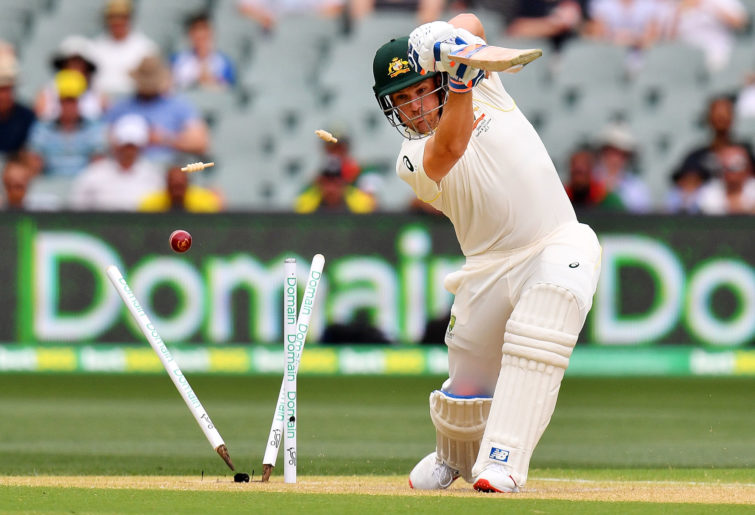
(Daniel Kalisz – CA/Cricket Australia/Getty Images)
Australia’s famed bowling line-up is trumped by India’s potent new formation
The pace trio of Mitchell Starc, Josh Hazlewood and Pat Cummins, along with the best off spinner in the world, Nathan Lyon, were supposed to prove too hot for the tourists’ batsmen to handle, but what transpired was beyond anybody’s imagination.
One of the best bowling attacks in the world proved to be cannon fodder for the Indian batsmen by the third Test at The MCG, and they were upstaged by an unheralded Indian bowling unit, who destroyed the home team’s batting line-up time and again.
A lacklustre Mitchell Starc and an off-colour Josh Hazlewood proved no match for the fast bowling triumvirate of Jasprit Bumrah, Ishant Sharma, Mohammed Shami and whichever spinner – Ravichandran Ashwin, Ravindra Jadeja or Kuldeep Yadav, with Umesh Yadav forming a pace quartet in the Perth Test – they played over the course of the series.
The Indians captured all ten Australian wickets in every completed innings – 70 wickets in total – while the Aussie bowlers managed to dismiss all the Indian batsmen only four times from their seven opportunities.
India’s pace bowling unit also managed to take the maximum number of wickets of any pace bowling unit in a calendar year – 172 wickets at an average of 23.72 in 2018.

(Quinn Rooney/Getty Images)
Opening conundrum
When India lost talented new opener Prithvi Shaw to injury before the first ball of the series had been bowled they were forced to return to their third choice, Murali Vijay. Once India’s first choice opener, he continued his poor form from England and looked uninterested and lazy whenever he batted.
Adding to the team’s troubles was the indifferent form of Kannanur Lokesh Rahul, who tried to hit his way out of trouble and failed more often than not. With both openers not coming off and with Shaw out of action, India were desperately seeking answers to their opening conundrum.
Australia had their fair share of problems at the top. Aaron Finch, who had only recently been selected as an Australia Test opener, looked way out of his depth and perished cheaply every time he tried to play strokes too early.
With the absence of Dave Warner to suspension and Matt Renshaw to form, the hosts turned to rookie Marcus Harris, who answered the call with some gritty knocks. However, Australia’s woes at the top continued, and they resorted to using Khawaja to partner Harris in the final Test.
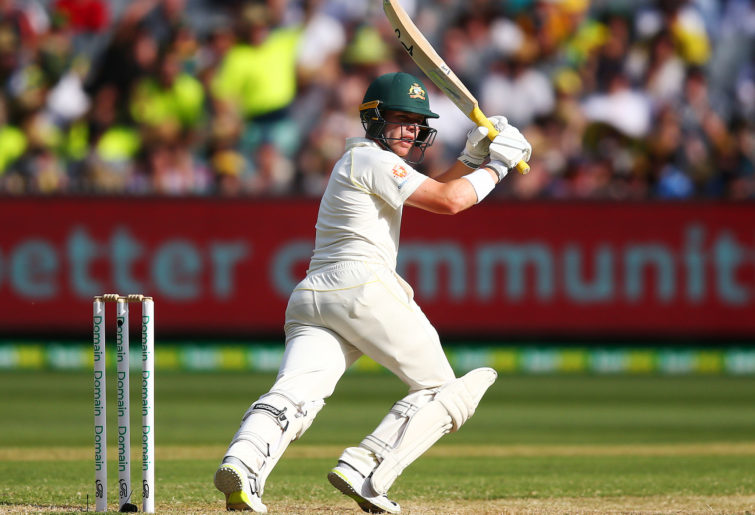
(Michael Dodge/Getty Images)
Arise, Sir Cheteshwar
If Virat Kohli is the king of Indian cricket, Pujara undoubtedly proved over the year that he is its knight in shining armour. Such was his contribution to India’s win Down Under that even a batsman of Kohli’s calibre was left in his shadow.
Pujara’s series tally of 521 runs with three centuries put him head and shoulders above the rest of the batsmen in the series. In doing so he finally corrected his overseas record and cemented his place as India’s permanent one-drop batsman for all conditions.
Were it not for his Day 1 century in Adelaide, the series result could have been dramatically different. He then scored a crucial 70-odd in the second innings of the same Test, which India won by just 31 runs.
Pujara followed up his Adelaide performance with gritty hundreds in both Melbourne and Sydney, which resulted in India winning their first series ever on Australian soil. He was clearly the difference between the two sides.
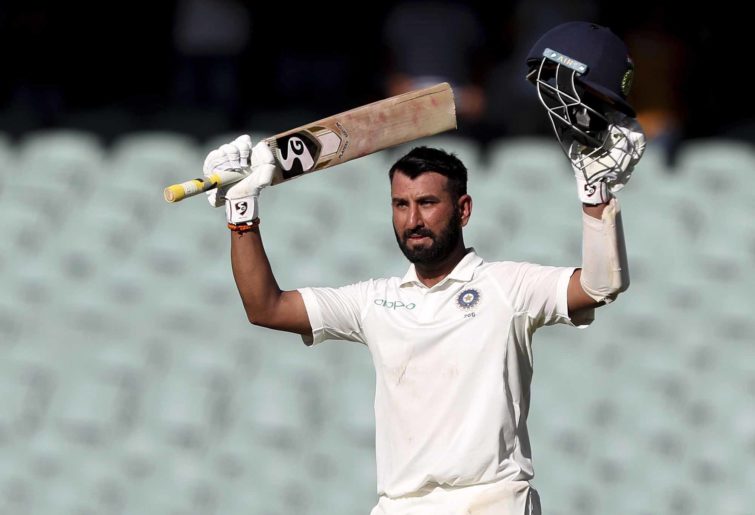
(AP Photo/James Elsby)
Pat Cummins, the all-rounder
While India definitely missed their flamboyant all-rounder Hardik Pandya, Australia seemed to find one in pace bowling star Pat Cummins. Apart from making crucial breakthroughs throughout the series – and snaring the big wicket of Kohli consistently – he batted for more than 400 minutes in the series and scored a wonderful 60 at the MCG to follow up his six-wicket haul in India’s second innings of that match.
Cummins consistently contributed with the bat and helped Australia’s lower order add some valuable runs to the total. With genuine talent at the crease, Australia could do well to groom him as a genuine all-rounder for the future. For that to happen, Cricket Australia must take great care of this precious asset and manage his workload judiciously, as he is known to be prone to injury. If they do, he could serve the baggy greens well as a true all-rounder for years to come.
Bumrah the destroyer
In just his first year of Test cricket Jasprit Bumrah emerged as the indisputable leader of the Indian attack. With a unique action and a short run-up he was able to extract tremendous pace and zip from all the pitches he played on around the world.
His control and ability to bowl the right lengths saw him rattle up 48 wickets in just nine Test matches in 2018. His nine wickets on a flat MCG pitch saw him win the match for India and be rightly adjudged the player of the match. His talent, ability to learn quickly, ambition and fitness make him the paceman to watch in 2019 and beyond.
Australia’s tireless soldier
The home team pace trio was supposed to cause mayhem for the Indian batsmen, but it was wily off spinner Nathan Lyon who created the most trouble for the visitors. His tireless efforts and skill kept Australia in the game at Adelaide, where he snared six second-innings wickets, and his eight wickets in near-perfect pace-bowling conditions won Australia the match in Perth.
Such was the threat he presented that even Virat Kohli, during the course of his masterful century at Perth, failed to dominate Lyon. Lyon also made a habit of snaring big, crucial wickets every time his team needed it.
Were it not for Lyon’s efforts, Australia may have been out of the contest much sooner than it actually transpired.
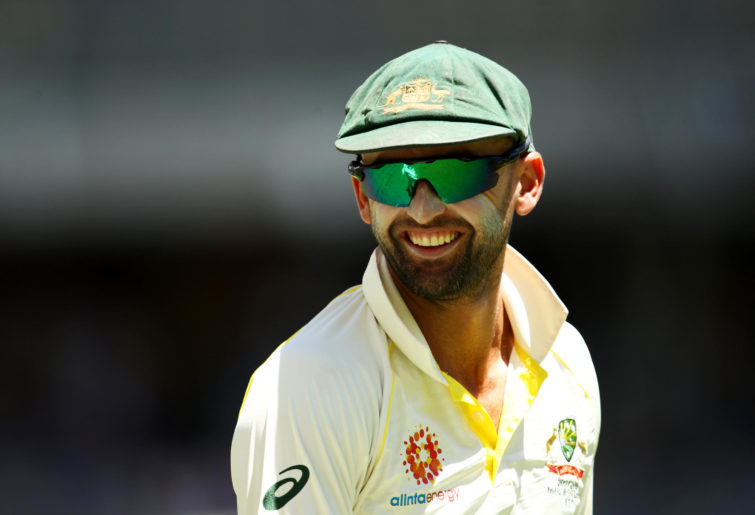
(Cameron Spencer/Getty Images)
The young guns
If India had discovered a diamond in Prithvi Shaw during the series against the West Indies last year, they unearthed a rare gem in Mayank Agarwal during the series Down Under. Agarwal announced himself on the international stage with a stroke-filled 76 in his first innings at the MCG, which he followed up with a watchful 42 in the second innings, contributing to India’s second-innings total of 106 runs.
He followed that up with a dazzling 78 at The SCG, giving the world more than a glimpse of his enormous talent. Before selecting him, India struggled to get a decent start from their incumbent openers Murali Vijay and KL Rahul. Agarwal made all the difference at the top of the order.
India’s young dynamic wicketkeeper-batsman Rishabh Pant is fast becoming the biggest rival to South Africa’s Quinton de Kock as the best wicketkeeper-batsman in the game today. If question marks arose due to his shoddy work behind the stumps in England, they were emphatically answered with some outstanding work in Australia and a world record-equaling performance of 11 catches in a Test.
The more modest swinging conditions of Australia compared to England definitely helped, but there was no doubt that considerable work had gone in between his debut series and the current Australian tour.
But his more telling contribution came with the bat. His handy totals down the order helped India’s score swell on more than one occasion, and he delivered the coup de grace with a brutal assault on the Australian bowlers to the tune of 159 unbeaten runs.
If he continues in the same vein, Mahendra Singh Dhoni and other Indian wicketkeepers of the past may soon become distant memories.
Australia’s batting unit may have misfired all summer but in young opener Marcus Harris they discovered a pugnacious player. The young former West Australian’s temperament, when more experienced teammates were failing, was top drawer, and with two 50-plus scores in the series, he was definitely one of Australia’s batting stars, and and one in which the team should heavily invest.
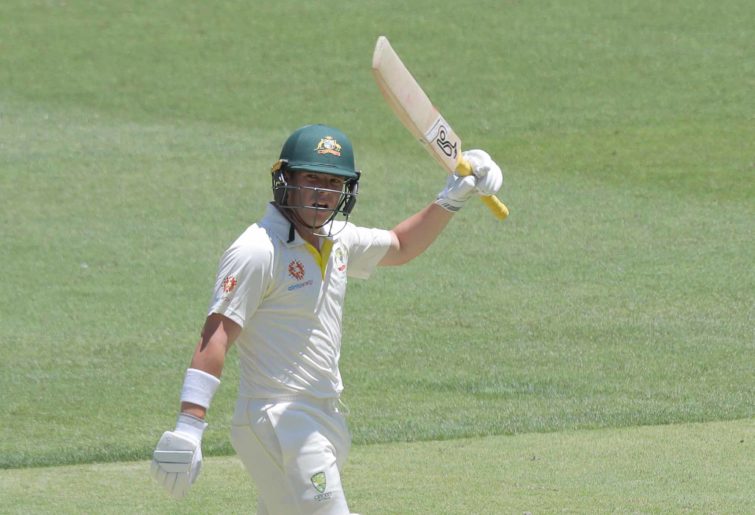
(AAP Image/Richard Wainwright)
The tacticians
Ravi Shastri and Virat Kohli finally got their tactics right, having botched them up quite spectacularly in the two previous tours preceding this one. Right from team selections – placing their faith in tried and tested hands Pujara and Rahane – to batting first every time they won the toss, the Indian think tank got most of their strategies spot on.
Getting Hanuma Vihari to open the batting was a masterstroke as it gave them the option of playing all-rounder Jadeja, who took three crucial wickets in Australia’s second innings and scored a swashbuckling 82 at the Sydney Cricket Ground.
By contrast Australia’s leadership team of Justin Langer and Tim Paine got most of their tactics completely wrong. Apart from playing the right combination in Perth, they failed on all counts.
Their insistence in playing Aaron Finch at the top despite his clear discomfort – irrespective of a good knock in The UAE – more often than not left the team feeling a batsman short. Dropping and picking Peter Handscomb, who clearly has technical flaws, showed cluttered minds and a team and its management in disarray.
Matt Renshaw or Joe Burns definitely deserved a look in, and the failure to look beyond the obvious was as much their undoing as was their lack in bench strength.
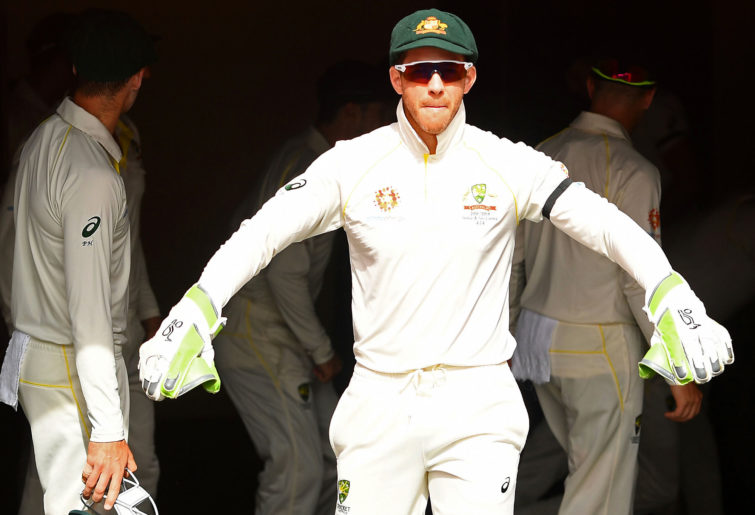
(Quinn Rooney/Getty Images)
What does the future hold for both teams?
With the eventual return of prodigiously talented opener Prithvi Shaw and the tenacious Mayank Agarwal at the top of the order India finally have an explosive and hopefully reliable opening pair. Add to the mix a sure to return, vastly improved KL Rahul and India will have too many openers for the slots available.
With Pujara and Rahane cementing their places as India’s men for all seasons and Kohli as the undisputed best batsman in the world, India have a top five that oppositions will find demoralising. Add to that the return of flamboyant all-rounder Hardik Pandya and the mercurial wicketkeeper-batsman Rishabh Pant and India’s batting order swells to damaging proportions.
With their pace bowling unit firing on all cylinders and three quality spinners in Ashwin, Jadeja and Kuldeep to back them up, India certainly presents a formidable opponent for any team. They will definitely be one of the teams to watch going forward, and with a fearless and ambitious captain in Kohli at the helm they will most certainly break new ground and set new landmarks in Indian cricket.
The return of batting superstars David Warner and Steve Smith will see Australia return to being a fighting unit sooner rather than later. Add Marcus Harris and Matt Renshaw to the list and Australia too will have the problem of a bursting top order.
The No.5 and No.6 batting slots will have to be closely looked at, but if they can sort that out, the baggy greens will have a stable batting unit capable of gathering the runs that their bowlers so desperately need.
The bowling picks itself, but the addition of a couple of pace bowlers in Jhye Richardson and Chris Tremain could help their cause
It’s been an enthralling series to say the least, and the next contest between these amazing rivals, both hopefully at full strength, could well and truly be an epic.